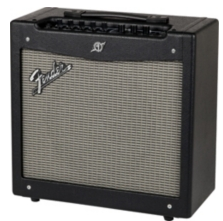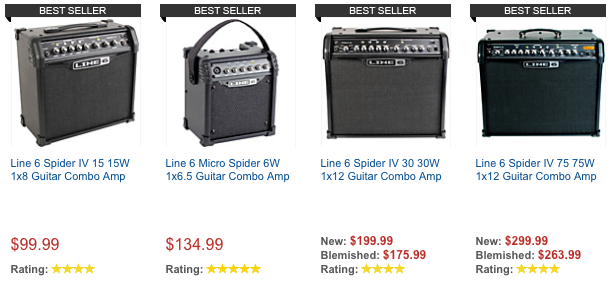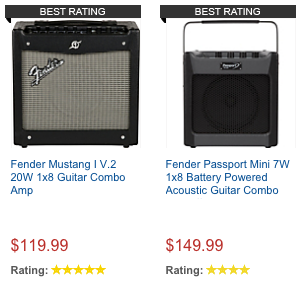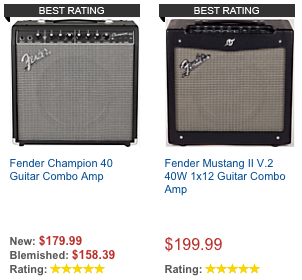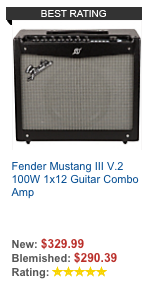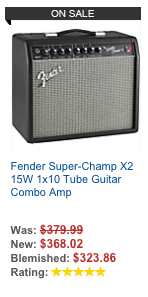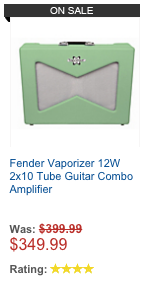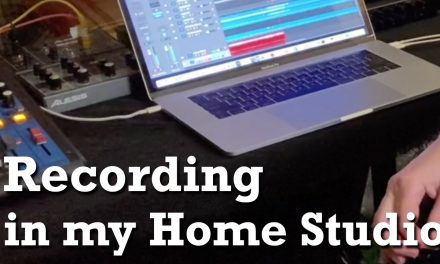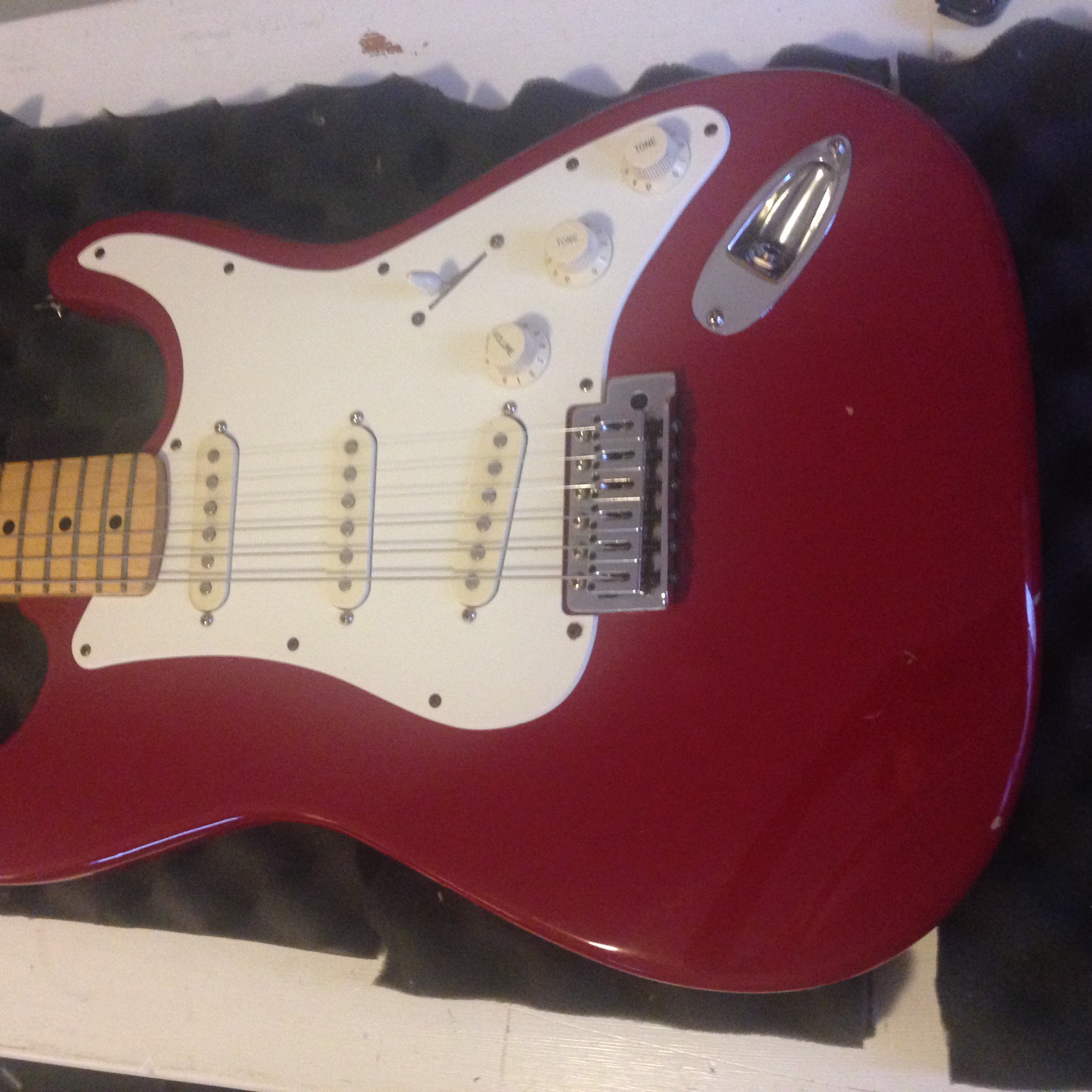This topic isn’t discussed enough. The needs of a guitarist vary depending on the situation, and the four basic situations for guitarists are practicing, jamming, recording, and performing. I think some amp companies get slagged far too much by people who don’t stop to consider what the amp was really designed for. We always want to sound good, but technology has rewritten the rule book and many guitar players haven’t actually sat down and thought about this.
See, it’s like this: my regular site readers are smart, funny, and good looking. If you’re new to the site, you might mistake my sense of humor for arrogance. That would be a mistake. You’re supposed to mistake my arrogance for humor.
Practicing
Guitarists practice in many different locations, and at many different volume levels. If you have your own studio and have a half stack set up and that’s your practice situation, more power to ya. Why are you reading this post? Actually you should read this post. The practice amp is the most misunderstood animal of the amp family. Most of us practice in our bedrooms, or in another room in the house, and have to keep the volume at a low to moderate level because of other people. In many cases, we might need to pick up our guitar and amp and temporarily move to another room. So we want an amp that sounds good at low to moderate volume levels and is fairly portable.
The good news is that the market is stuffed full of great practice amps for almost every budget. Some might not agree, but at low volume levels you can get a solid state amp that can sound as good as a tube amp. Amp modeling has gotten very, very good, and you can get new and used amps from Blackstar, Line 6, Fender, Peavey, Roland, and Vox that sound great at low volumes. It’s technologically easy to do. The size of the speaker matters – the larger the speaker, the bigger the sound in general. But if you’re up against the restraints of having to move an amp around the house often, you don’t want a heavy amp. The most important thing here is that you do not have to spend a lot of money to get a great sound at practice volume levels.
Jamming
If you’re going to be playing with other people, things change. The variable is the person you’re jamming with. Or people. And what they will be using. If going to a buddy’s house to jam, where you’ll be sitting in a living room and playing at practice level volumes, the criterion is the same as the practice amp. But if your buddy plays loud and won’t turn down, or if you will be competing with a live drum set, things change a lot. Your solid state 15 watt Peavey Vypyr will not cut it against a half stack or actual drummer. And guess what? This is where amp power starts to matter. At the low end you have amps like the Fender Mustang II – a 40 watt solid state amp with a 12 inch speaker. If you’re going up against drums, 30 watts of solid state power is minimal. Or 15 watts of tube power. What? Yup. Wattage is not a volume indicator, it’s a power indicator. Tube amps are about twice as loud as solid state amps. This is a huge overgeneralization that wouldn’t stand up to scientific testing, but it’s pretty close to true. And you’d better have at least a 10 inch speaker, and preferably a 12, unless you got some custom-designed crazy loud speaker like the kind they put in those lunchbox amps.
But you still don’t want to be lugging around a huge amp. And more importantly, this is where amp quality starts to matter. You CAN take a Mustang II to a jam with a drummer. And you will be heard. But at loud volumes, the Mustang II will not sound anywhere near as good as it does at low volumes. With “inexpensive” solid state amps, the louder you make them the harsher they can sound (in general.) The speakers used in amps like the Mustang II are inexpensive and designed to sound good at low to moderate volume levels. Same with the actual enclosures of the amps. The solid state amp itself will not be as high quality as a more expensive amp, with more unwanted artifacts coloring the sound at louder volume levels.
Does any of that matter? Only you can answer that. And you’ll know if you’re not happy with the sound. And if you’re not, it’s time to leave the world of practice amps and enter the world of professional amps. Part 2 of this series will discuss…
WAIT!!! I can hear the shouting, so let me address it. There are some solid state amps that don’t cost a ton that sound better than the Mustang II. The Mustang III, for example. Two weeks ago I was at the Sam Ash in Tampa and they had a used Mustang III for $175. I almost bought it*, because I need a practice amp. Why does the Mustang II fail when you crank it up to 8? Because the 40 watt solid state amp is getting pushed too hard, and solid state amps sound like poo when pushed too hard, AND because the speaker is of the “it’ll do” variety. As stated earlier, for low to moderate sound levels. So the two problems are the solid state amp being pushed too hard, and the speaker being pushed too hard. What if we move from a 40 watt solid state amp to a 100 watt solid state amp, and from a cheapo 12 inch speaker to a decent Celestion 12 inch speaker? Will it sound better at louder volumes? Yes, and that’s exactly why the Mustang III was designed the way it was.
* Side Note – I didn’t buy the Mustang III, because it didn’t meet my practice amp requirement of being small and light. It’s a heavy sucker and it’s not small – I’m looking more for something that I won’t stub my toe on at 3 am in a dark room.
Let’s look at this with pictures. Line 6 is sort of the Godfather of modeling amps. Here’s how they handle the jump from practice to jam, with a screenshot from guitarcenter.com:
Let’s have a look. The Spider IV 15 must be cool because it uses roman numerals. Kids, ask your parents about that. The Spider IV 15 at $100 is a small amp with a small speaker for a small price. At low volume levels it sounds great. Line 6 amps tend to do overdrive sounds well, and the clean sounds are so-so. Could you take the IV to a jam? Sure, as long as the person you’re jamming with doesn’t play loud. And won’t mock you for bringing a toy amp. You don’t need friends like that anyway.
Next we have the battery powered Micro Spider. If you want to be able to play where there is no power, this is damn cool. Otherwise, it’s more money than the Spider IV and doesn’t sound as good. The next entry is the Spider IV 30 is one of the best selling guitar amps ever. The reasons are easy to see – it’s loud enough to make parents bang on bedroom doors, sounds good, and is only $200. A great sounding practice amp, and you can show up to almost any informal jam session with it. But if you’re jamming with a live drummer with real drums, you might not be happy with the IV 30. You can crank it up and be heard over drums, but you’ll be pushing the 30 watt solid state amp and inexpensive speaker to the limit and beyond. Harsh.
Line 6 pulled an interesting stunt with the IV 30 – they asked Celestion for an extremely inexpensive 12 inch speaker. That way they could write “Celestion Custom 12 inch Speaker” on the box. In this case, “custom” means “cheap.” This is not an $85 Celestion Vintage 30 like you might find in a Marshall stack. It can’t be, not at this price range.
Line 6 makes the jump to great jamming amp with the Spider IV 75. We’ve gone from 30 watts to 75 watts, so you can crank this amp up loud enough to be heard over drums without pushing the solid state amp too hard. And they’ve included a “Celestion Custom 12 inch Speaker.” But it’s not the same as the 30 – this is a much better speaker. I wish Line 6 would have used a real actual model designation instead of “Custom.” Regardless, this amp sounds better than the 30 at higher volumes. But at low volumes, does this amp sound night and day better than the 30? Nope.
Are you starting to draw the conclusion that the louder you want to be able to play, the more money you need to spend?
Now let’s look at Fender, with another screenshot from guitarcenter.com:
Look familiar? The Mustang I has the small 8 inch speaker, then they have a battery powered amp, and then… two different offerings in the “around $200” range. Hmm. Both the Champion 40 and the Mustang II have 40 watt solid state amps, and 12 inch Fender “Special Design” speakers. Special Design is like Custom – it means “hey, these speakers were made by Fender. Stop asking so many questions.” They’re inexpensive speakers. Just like the Celestion in the Spider IV 30, they’ll sound good at low to middle volume levels, but fart out next to a real drum set.
The Champion is a neat amp. Take the Mustang II and put it in a more classic looking cabinet, remove the USB port, and hard code a few of the best Mustang II amp simulations and stick them on a knob. It’s simpler to use and not as flexible.
So then we make the jump up to the next level with:
Fender opts for 100 watts in their step up solid state model, the Mustang III. And for a speaker, they’ve chosen the Celestion G12T-100. That’s a great sounding speaker. Props to Fender for not using another “Special Design” speaker. Anyway, you see the same deal as with the Line 6 lineup – increase the power level and speaker quality.
But Fender has made a name for their tube amps, so now we see a couple of examples of “low end” tube goodness – the Super-Champ X2 and the Vaporizer. Both amps clearly demonstrate Fender’s lack of intelligence when it comes to inexpensive tube amps. The Super-Champ X2 does NOT sound as good as the Mustang II at low volume levels, in part because the 10 inch Fender speaker in the X2 is not very good. I used to own one. No low end, unless you put it on the floor. The X2 will outperform the Mustang II when you crank both amps up to 8, for sure, but for a practice amp played at lower volumes, it just doesn’t sound that good. But why? It’s a tube amp, it ought to sound great. Well, it’s sort of a tube amp. There are still debates about how the preamp section is mostly solid state. But that speaker is horrible. I owned a X2 and I was disappointed with it, until I went out and bought a cabinet with a 12 inch Celestion Seventy 80 speaker and hooked it up. It immediately improved the sound of the X2 dramatically. Fender could have sold a billion X2’s had they increased the size of the cabinet and given it a decent speaker, and slightly increased the price. Then there’s the Vaporizer – with two knobs, volume and tone, you’re guaranteed of getting NOT the sound you want. As a practice amp, it’s useless if you want a distorted sound. Don’t tell me to use a pedal. An amp ought to be able to have a decent distortion on its own.
Enough of my hatred for Fender’s bad decisions. I think I’ve made the point. For a bedroom amp that you can use to jam with your friends, the Mustang II and Spider IV 30 are winners. If your friend has a real drum set, you need to step up to the Mustang III or the Spider IV 75. The Blackstar amps and the Vox amps are also competitors in this space, but I’m over 2,000 now as it is.

